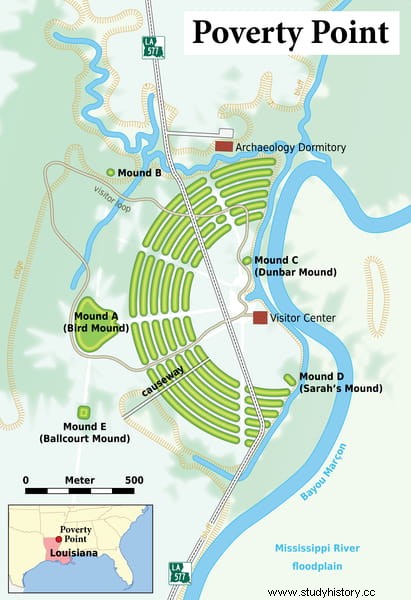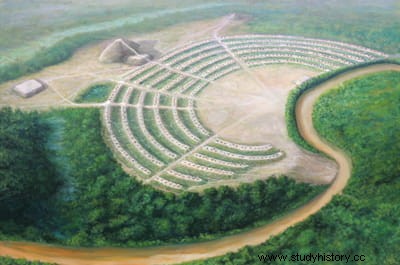For a long time it was believed that the Native Americans who occupied the area known as Poverty Point in northern Louisiana were simple hunters and gatherers. However, new archaeological finds from Washington University in St. Louis offer a very different picture of North America's first civilization.
Far from the simplicity of life sometimes described in anthropology books, these early indigenous people were highly skilled engineers capable of building massive earthen structures in a matter of months – possibly even weeks – that stood the test of time, they show. the findings.
We as a research community - and the population as a whole - have undervalued the natives and their ability to do this job and do it quickly the way they did said Tristram R. Kidder, lead author and Professor of Anthropology. One of the most remarkable things is that these earthworks have stood for over 3,000 years without failure or significant erosion. By comparison, modern bridges, highways, and dams fail with astonishing regularity because building things out of dirt is more complicated than you might think. .

The findings were published in Southeastern Archeology . Kai Su and Seth B. Grooms of the University of Washington, along with graduates Edward R. Henry (Colorado State) and Kelly Ervin (USDA Natural Resources Conservation Service) also contributed to the article.
The Poverty Point site, a World Heritage Site, consists of a massive 22-meter-high mound of earth and concentric half-circle ridges. The structures were built by hunter-gatherers approximately 3,400 years ago from almost 2 million cubic meters of earth.
According to Kidder, the site was likely an important religious site to which Native Americans went on pilgrimage. It was abruptly abandoned between 3,000 and 3,200 years ago, probably due to documented flooding in the Mississippi Valley and climate change.
The ridges at Poverty Point contain a large number of artifacts on the rims and within, suggesting that people lived there. Kidder and his team re-excavated and re-evaluated a site on West Ridge 3 of the Poverty Point site that was originally excavated by renowned archaeologist Jon Gibson in 1991. Using modern research methods, such as radiocarbon dating, microscopic analysis of soils and magnetic measurements of them, the investigation provides conclusive evidence that the earth movements were made quickly.
Essentially, there is no evidence of boundaries or signs of erosion between the various levels, which would have occurred had there been even a brief pause in construction. Kidder believes that the construction was carried out in layers, that is, by layers of sediment deposited to increase the height of the ridge and linear dimensions before another layer was placed to widen the footprint vertically and horizontally.
Because it is important? According to Kidder, the findings challenge previous beliefs about the behavior of pre-modern hunters and gatherers. The construction of the massive mounds and ridges of Poverty Point would have required a large amount of well-organized labor and would have demanded leadership to execute. Hunters and gatherers are believed to have avoided politics.

Between the speed of excavation and construction, and the amount of earth being moved, this data shows us natives flocking to the site and working together. This is extraordinary, because hunter-gatherers were not supposed to be able to carry out these activities Kidder said.
What is even more impressive than how quickly people built the earthen structures is the fact that they are still intact. Due to its proximity to the Gulf of Mexico, this area receives immense amounts of rainfall making earthen structures especially prone to erosion. Microscopic analysis of soils shows that Native Americans mixed different types of soil - clays, silts and sand - in a calculated recipe to make structures stronger
Similar to Roman concrete or rammed earth in China, Native Americans discovered sophisticated ways of mixing different types of materials to make them virtually indestructible, despite not being compacted. There is something magical about it that our modern engineers have not yet been able to discover Kidder said.
